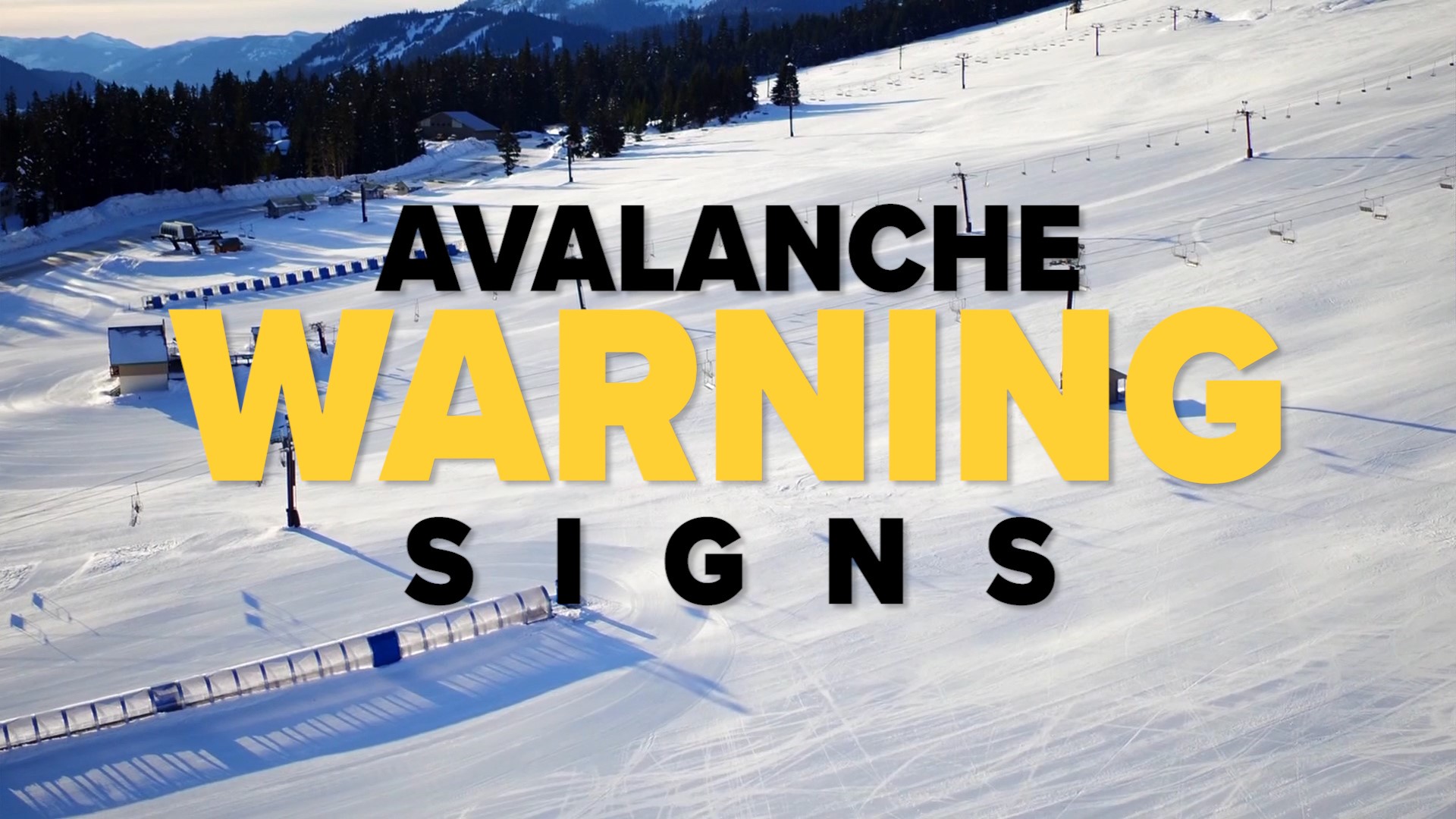SEATTLE — The mountains of the Pacific Northwest get some of the heaviest snow totals in the country. While the snow can create picturesque mountain scenes that call skiers and snowboarders to Washington’s mountains, it also brings with it the danger of avalanches.
Each fall and winter, the Northwest Avalanche Center (NWAC) provides daily avalanche forecasts for 10 zones in Washington and northern Oregon. The areas include the Olympics, Mount Hood, and eight different regions across the Washington Cascades.
The NWAC categorizes avalanche risks using a five-point Avalanche Danger Scale. The ratings are determined by the likelihood, size, and distribution of the avalanches. The ratings and meanings are listed below:
Low: Generally safe avalanche conditions. Watch for unstable snow on isolated terrain features.
Moderate: Heightened avalanche conditions on specific terrain features. Evaluate snow and terrain carefully and identify features of concern.
Considerable: Dangerous avalanche conditions. Careful snowpack evaluations, cautious route-finding and conservative decision making essential.
High: Very dangerous avalanche conditions. Travel in avalanche terrain is not recommended.
Extreme: Avoid all avalanche terrain.
There is also a “no rating,” meaning people should “watch for signs of unstable snow such as recent avalanches, cracking in the snow, audible collapsing, and avoid traveling on or under similar slopes.”
So, how does the NWAC determine the avalanche risk for each zone during the winter months?
According to the NWAC, field-based avalanche forecasters and meteorologists gather and analyze snow observations, along with analyzing the weather forecast for each zone. Avalanche and snowpack information is not only gathered by NWAC forecasters and professional observers but also from professionals, backcountry travelers and remote weather stations from across the region.
The NWAC has one of the most comprehensive mountain weather data networks in the U.S., consisting of over 50 remote weather stations. The data gathered by the remote stations help the center provide the public with real-time weather and snowpack information.
The NWAC also works with ski patrols, national park and forest rangers, and highway avalanche control programs to share information throughout the winter.
The NWAC issues the daily avalanche forecast each day at 6 p.m. and works with the National Weather Service (NWS) to issue and distribute avalanche warnings, watches and other special bulletins.
The NWAC said avalanche warnings are issued when “High” avalanche danger is expected within 24 hours for “many areas,” which can mean large geographic areas or “several aspects and/or elevations in a specific geographic area.”
An avalanche warning will always be issued when the danger is “High” or “Extreme” in the three elevation bands, which are "below the treeline," "near the treeline" and "above the treeline."
The NWS shared the following warning signs of unstable snow and possible avalanches:
- You see an avalanche happen or see evidence of previous slides
- Cracks form in the snow around your feet or skis
- The ground feels hollow underfoot
- You hear a "whumping" sound as you walk, which indicates that the snow is settling and a slab might release.
- Heavy snowfall or rain in the past 24 hours
- Significant warming or rapidly increasing temperatures
- You see surface patterns on the snow made by the force of strong winds. This could indicate that snow has been transported and deposited in dangerous drifts that could release
In addition to providing mountain weather and avalanche forecasts, the NWAC’s mission is to increase avalanche awareness and reduce the impacts they have on the community by providing education and data.
Traveling in the backcountry always has some risk, especially if you don’t have any formal avalanche training or haven't taken a course. The NWAC said the best way to get out of harm’s way is to “avoid avalanche terrain altogether.”
The NWAC shared the following tips to stay out of harm’s way:
- Stay out of closed areas and don’t cross ropes or closed gates at ski areas or on highways
- Stop, regroup and take breaks in non-avalanche terrain well away from places where avalanches could run from above
- If you choose to cross or travel on slopes steeper than 30 degrees, put only 1 person at a time on the slope
- Keep your group within visual and voice contact
- Clearly communicate with your group about the location of avalanche terrain, any safer terrain nearby and a plan for travel and regrouping
- If necessary, use visual signals or two-way radios to communicate at a distance
- If a partner loses a ski or gets their snowmobile stuck on a slope, don’t help them. Watch them from safer terrain out from under the slope
Download the KING 5 app to check the interactive radar near you, as well as the latest forecast, cameras and current conditions.

